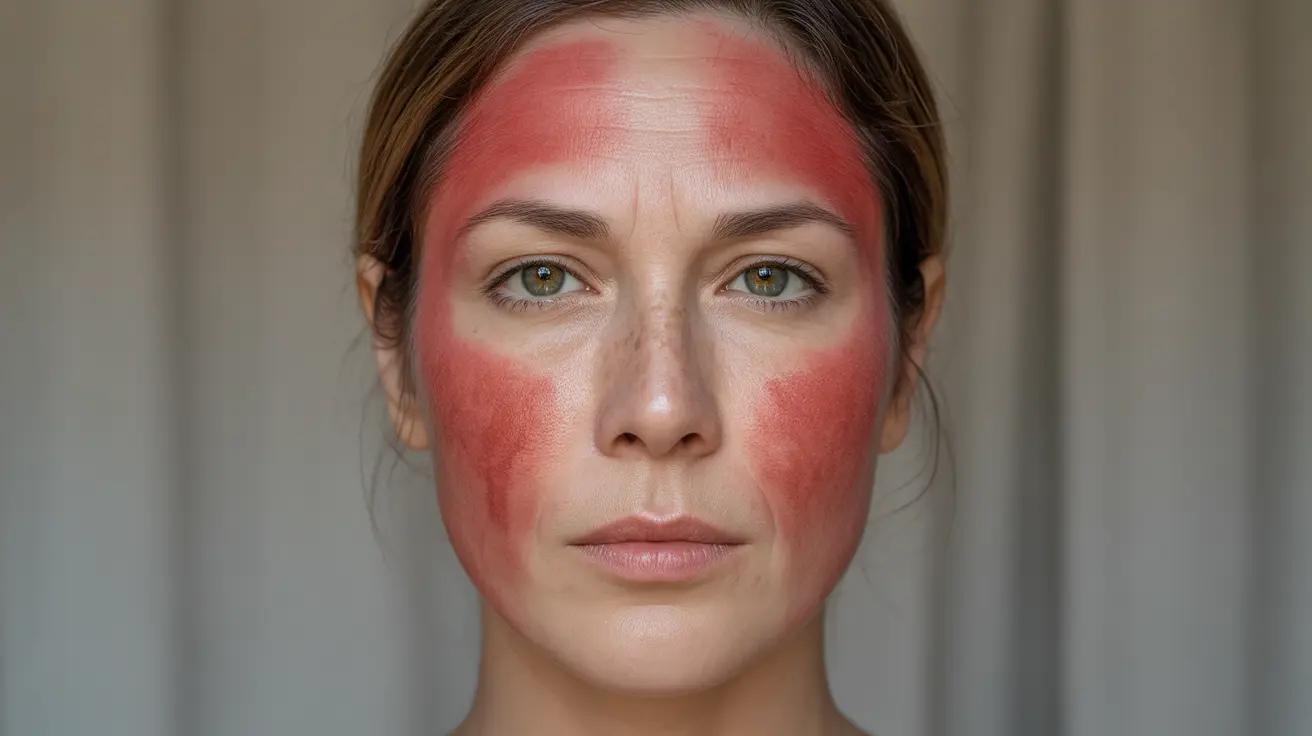Living with Hashimoto's thyroiditis can affect many aspects of your health, including your skin. One common but often overlooked symptom that many patients experience is facial flushing – a persistent redness or warmth in the face that can be both uncomfortable and concerning. Understanding the relationship between Hashimoto's disease and facial flushing is crucial for proper management and treatment.
In this comprehensive guide, we'll explore why people with Hashimoto's may experience a flushed face, how to distinguish it from other conditions, and what you can do to manage this symptom effectively.
Understanding Facial Flushing in Hashimoto's Disease
Facial flushing in Hashimoto's disease often occurs due to the complex relationship between thyroid function and circulation. When your thyroid isn't working properly, it can affect blood vessel dilation and your body's temperature regulation mechanisms, leading to noticeable redness and warmth in the face.
Common Characteristics of Hashimoto's-Related Flushing
The facial flushing associated with Hashimoto's typically presents with these distinct features:
- Generalized redness across the face
- Sensation of warmth or heat
- May worsen with stress or temperature changes
- Often accompanied by other thyroid symptoms
- Can fluctuate throughout the day
Distinguishing Hashimoto's Flushing from Other Conditions
It's essential to understand that facial flushing can have multiple causes, and distinguishing between Hashimoto's-related flushing and other conditions requires careful observation and medical evaluation.
Key Differences from Rosacea
While both conditions can cause facial redness, Hashimoto's flushing typically:
- Affects the entire face more uniformly
- Doesn't usually involve papules or pustules
- May improve with thyroid treatment
- Often correlates with thyroid hormone levels
Managing Facial Flushing with Hashimoto's
Several approaches can help control facial flushing associated with Hashimoto's disease:
Medical Management
The primary treatment focuses on:
- Optimizing thyroid hormone levels
- Regular monitoring of thyroid function
- Addressing any underlying inflammation
- Working with healthcare providers to adjust medication as needed
Lifestyle Modifications
Several daily practices can help reduce flushing:
- Avoiding trigger foods and beverages
- Maintaining consistent room temperatures
- Using gentle, non-irritating skincare products
- Protecting your face from sun exposure
- Managing stress through relaxation techniques
Frequently Asked Questions
Can Hashimoto's thyroiditis cause a flushed or red face, and how is this different from rosacea? Yes, Hashimoto's can cause facial flushing due to thyroid dysfunction affecting blood vessel regulation. Unlike rosacea, Hashimoto's-related flushing typically presents as uniform redness without bumps or pustules and often improves with thyroid treatment.
What are the main symptoms and causes of facial flushing in people with Hashimoto's disease? The main symptoms include generalized facial redness, warmth, and occasional burning sensation. This occurs due to autoimmune inflammation, disrupted thyroid hormone levels affecting blood vessel function, and altered temperature regulation.
How can I tell if my facial redness is due to Hashimoto's, rosacea, or another underlying condition? The best way to determine the cause is through professional medical evaluation. Hashimoto's-related flushing often correlates with thyroid hormone levels and other thyroid symptoms, while conditions like rosacea have distinct patterns and triggers.
Are there specific treatments or lifestyle changes that help reduce facial flushing and redness with Hashimoto's? Yes, optimizing thyroid medication, avoiding triggers, using gentle skincare products, and managing stress can help reduce flushing. Working with healthcare providers to maintain proper thyroid levels is crucial.
Does having Hashimoto's or rosacea increase my risk of developing other skin or thyroid problems? Having Hashimoto's can increase your risk of developing other autoimmune conditions, including skin conditions. Regular monitoring and working closely with healthcare providers can help manage these risks effectively.




